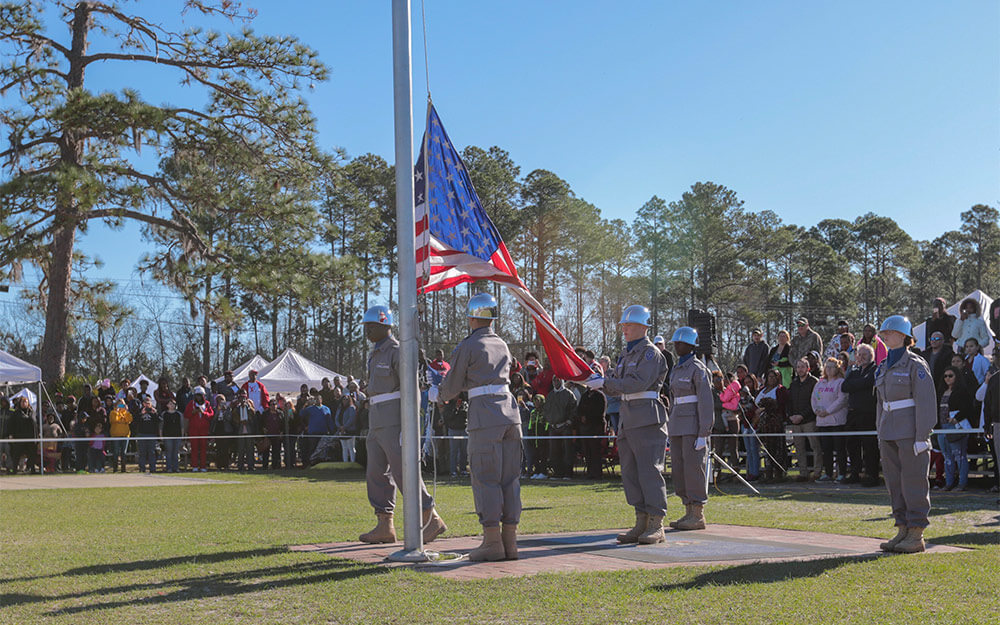For most people, happiness is one of the primary goals of life. The desire to be free of stress and anxiety inspires civilians and Soldiers alike. The need to find happiness is so vital that our founding fathers saw fit to regard the “Pursuit of Happiness” as an “unalienable right” in the Declaration of Independence.
While most want to be happy, happiness can sometimes be difficult to find. And when found, it can be short-lived and fleeting. Caught in this cycle, one can find oneself stuck in a low state of depression wondering if true happiness will ever be attainable. To understand this phenomenon and avoid emotional extremes, the best course of action is to start with an understanding of the different levels of happiness. A full grasp of how these levels interact may help those striving to reach a solid ground of contentment.
Envision a pyramid with three different sections: top, middle and bottom. Rather than begin at the deeper level of happiness, we will start at the top.
“Loneliness kills. It’s as powerful as smoking or alcoholism.”
The top section of the pyramid is what we will call “experiential.” Happiness in this area constitutes events that happen to us or those things that we experience. The experiences could be anything from getting a good parking space at the grocery store, a promotion at work or enjoying a favorite meal. These types of occurrences are not meant to bring complete emotional fulfillment. They are temporary and short-lived. Thus, the top section is represented by the smallest section of the pyramid. While we all want to receive small daily blessings, one may find oneself on a joy roller-coaster if experiential happiness is all that is desired. A person continually living on this level constantly searches for the next good feeling or moment of happiness. Alcohol or drug addiction and uncontrolled financial spending may often be the result of one’s search for experiential happiness. A telltale sign that one may be living at this level of the pyramid is that nothing seems to bring inner peace or contentment. Seeking help from a chaplain or behavioral health professional can be the first step to understanding this dilemma and overcoming it.
The middle level of the pyramid is labeled “relational.” The relational level brings happiness into our lives that is based on the relationships we have with other people. At this level, daily happenings may be good or bad, but relational happiness tends to ground people in family ties and close friendships. People who build honest and open relationships are better equipped to handle life stressors because their coping skills are nurtured and strengthened through the support of friends and family members. Experiences may shake their emotional foundation, but honed relationships can bring steadfastness. An important aspect of our Guard Family is building trustworthy relationships within Families and military units. Studies reveal that Soldiers who have strong relationships within their units tend to perform better at their work and have a more positive attitude toward their military service. Consequently, they tend to have stronger Family ties as well. People who choose to isolate from others face a greater risk of depression, and possible suicidal ideations.
Perhaps the longest study on happiness is being conducted by Harvard University. The study, which is still ongoing after almost 80 years, reveals that building nurturing relationships is the number one indicator of human happiness – more so than attaining financial wealth or becoming famous. Dr. Robert Waldinger, the current director of the study, states, “Loneliness kills. It’s as powerful as smoking or alcoholism.” However, for some, building trustworthy relationships can be a challenge. Many often feel vulnerable opening up to others. If this is true for you, a good place to start opening up is with the people you are closest to right now. Set aside time each day to spend with your spouse, your children or your close friends. Make time to call a friend you haven’t spoken with in months or years. Rebuild friendships by offering forgiveness and grace. Allow a certain amount of tolerance with others, while realizing that none of us are perfect. Enduring friendships work when people accept us as we are.
The third and bottom level of the happiness pyramid is what we will call “intentional.” This level is the largest in size, in comparison to the experiential and relational levels, because it houses a foundational element that is more valuable than happiness – meaning. The intentional level of happiness is based on finding meaning in life and an intention for living. Here, people tend to focus more on the needs of others than on their own needs. Martin E. P. Seligman, one of today’s leading psychological scientists, states, “You use your highest strengths and talents to belong to and serve something you believe is larger than the self.” At this level of living, serving others becomes a priority. While one may still enjoy daily experiences of happiness and spending time with friends and loved ones, the purpose for relationships is to help those around them. Keep in mind that the form of help is not limited to financial or physical assistance. It can be an encouraging word, a smile or a listening ear. Experts believe people in this category become givers instead of takers. Paradoxically, the more you give, the more you will receive – also known as “the law of the harvest.” A wonderful way to reach the intentional level of happiness is by devoting each day to encouraging someone. Encourage your Family members, co-workers and fellow Guard Soldiers. Pay attention to what people are experiencing around you, whether it be a life stressor or a celebration. In time, you will find that service to others has simply become a way of life.
By Contributing Writer CH (MAJ) Mark D. Phillips



